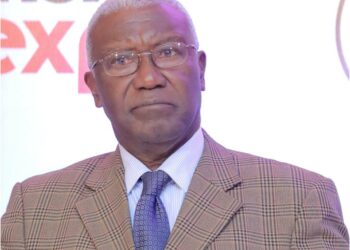By Mike Ssegawa
Uganda’s animals in the wild have increased in number, says state tourism minister Kiwanda Suubi Godfrey. While addressing the tourism fraternity ahead of the Wildlife Day, Minister Kiwanda reminded stakeholders gathered at Hotel Africana in Kampala that “conservation is very expensive” it was incumbent upon them to do everything possible to make good use of the resource through tourism activities.

“It’s an opportunity cost where we gave up other activities and conserved 10% of our land,” said Kiwanda, adding that “We must do everything possible to convince Ugandans that we made a good choice for them.”
Kiwanda explained that the number of animals in the parks was increasing due to conservation and peace in the country, citing Elephants having increased from 2000 in 1983 to 5346, Mountain Gorillas have increased from 298 to 400, Buffalos from 25,000 to 36,953 while Uganda Kobs have risen from 40,000 to 77,759.
“We must conserve for generations,” said the minister since tourism contributes about 10% of Uganda’s gross domestic product.
“But we can do better than this,” he quipped.

The minister who has visited most of Uganda’s national parks under his initiative Tulambule Uganda, condemned poaching and promised dire consequences for poachers.
“Poaching should be a no go area,” he said.
The public was addressed by among others the permanent secretary Ministry of Tourism Ms Doreen Katusiime and Executive Director Uganda Wildlife Authority Dr Andrew Seguya.
Dr Seguya said the culture of Ugandan is not about co-existence with animals, which causes human-animal conflicts.
He went on to espouse the systemic problem of poverty, unemployment and poor education which are fueling poaching in the country.
“More than 70% of Uganda young population live in rural areas where all national parks are located,” he reacted to a paper by Dr Lawrence Mugisha, an associate professor at Makerere University’s department of wildlife and aquatic animal resources.
He added, “The areas surrounding the national parks are the poorest of the poor and also the areas of greatest concentration of the youth.”
Seguya proposed that youth need to be educated and skilled in offering tourism services to sophisticated tourists to enable them gainfully tap into the tourism economy.
He said since 2011, over 700 jobs have been created in UWA to absorb Uganda youth but they were not enough.
This year’s Wildlife day focuses on how to mainstream youth in Wildlife conservation. World Wildlife Day 2017 in Uganda will be held at Uganda Museum on March 3, commencing with route march from the Independence monument in Kampala at 7am.
Do you have a story in your community or an opinion to share with us: Email us at editorial@watchdoguganda.com











